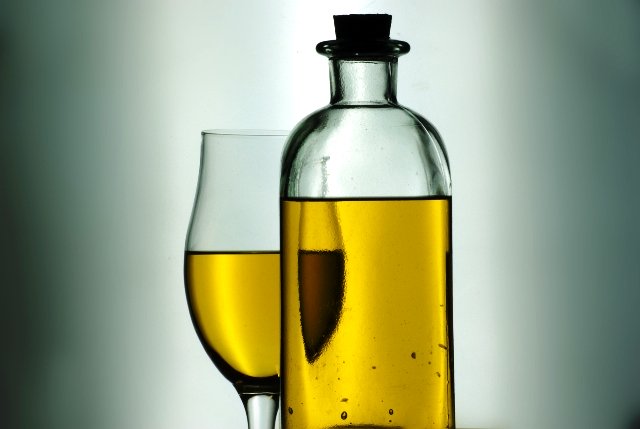
Energy security and independence and boosting local agricultural markets have been the main motivation. Later-day benefits have been discovered as well.
Biodiesel is a renewable fuel with reduced environmental footprint as compared to conventional diesel. It has low sulphur content and produces less particulate matter. It has higher lubricity and is biodegradable. Its CO2 footprint is 50-80% of conventional diesel.
For environmental and climate change reasons, developing countries have also been enlisted in these programmes. Admittedly, energy security is also enhanced.
It is said that Rudolf Diesel, the inventor of diesel engines, ran his first diesel engine on vegetable cooking oil. Vegetable oil was the fuel used before the discovery of crude oil and the advent of mineral petroleum fuels.
There are six possible raw material routes for making biodiesel. These are vegetable sources – palm oil, rapeseed, sunflower, cottonseed, canola, jojoba, jatropha and others; waste vegetable oil or used cooking oil as it is called; animal fats like tallow, lard, yellow grease and chicken fat; algae; sewage sludge; and saline agricultural plants.
There is shortage of vegetable oil raw material in Pakistan. Oilseeds and palm oil are imported. Hence, diversion of such sources to non-food energy sources would not be desirable. Animal fat has uses in soap-making and others. Algae, sewage sludge and saline agriculture appear to be futuristic. Thus, the only potential source of biodiesel appears to be used cooking oil and food waste.
No more jatropha
Jatropha had been considered as a highly attractive vegetable source. The assumption was that it could be grown in waste land and required very little water.
These assumptions did not prove to be true. With inferior land and less water, it was found that the yield was proportionally low, weakening the production economy of jatropha.
As a result, after more than a decade, jatropha cultivation and its use in making biodiesel is limited. There are no plans and programmes anywhere in the world in this respect, except for some remnant marginal projects.
Food crops or biowaste
It has been highly controversial that crops be used for energy or any other non-food purposes. However, crop and other biowastes have been welcomed as not interfering with food supplies, nationally or internationally.
Despite that, both in Europe and the US, corn and other food crops have been used for making industrial and potable ethanol. Ethanol is mixed in various proportions with gasoline for use in conventional and modified vehicles. The idea was to reduce dependency on imports and achieve environmental advantages.
Such production used to be called 1G (first generation) technologies. However, currently, 2G technologies have been developed which utilise crops waste and other biowaste material.
The European Union has prescribed a ban on palm oil by 2021 and a ban on all crop-based biofuels by 2030.
Food waste - both industrial and post-consumer, slaughter house and poultry fat and waste offer a multi-pronged benefit stream into biodiesel production; income and employment in the agriculture sector and general improvement of environment. Newer waste processing avenues are coming up, the latest one is chicken fat out of feathers, which hitherto had been a major pollution load.
Biodiesel blending
Biodiesel is blended with conventional diesel in various proportions. Five per cent blend of biodiesel, which is mostly marketed, is named as B5, 10% as B10 and 20% as B20.
It is reported that up to 20% biodiesel blends, no change in engines is required. However, most vehicle manufacturers allow 5% blend without annulling warranty claims.
In most European Union countries, 5% target has been achieved reportedly. The European parliament has issued RED-II (Renewable Energy Directive) according to which 12% renewable fuels are to be used by the year 2030.
Biodiesel production
It is relatively simple to make biodiesel, especially from used cooking oil. It is so simple that it is produced at home by the enthusiasts in the US.
Used cooking oil is filtered to remove physical impurities, heated to 60-degree Celsius and is mixed and stirred with methanol or ethanol (15%) in the presence of a catalyst (NaOH). A byproduct glycerol is produced which settles at the bottom. Water and excess methanol are removed.
Ethanol is widely available in Pakistan as a sugar industry byproduct. Glycerol can be used by the soap industry as what used cooking oil is diverted from it in the first place for making biodiesel returns back to the industry.
Pakistan’s biodiesel potential
Pakistan’s cooking oil market is estimated at 4 million tonnes per year. If 10% of the consumption is assumed to be collectable used oil, 400,000 tonnes per annum of used cooking oil can be used for biodiesel production.
Some estimates suggest waste vegetable oil generation of 500,000 litres per day (182,000 tonnes per annum) in Punjab alone. By comparison, diesel consumption in Pakistan is 7 million tonnes. Thus, some 5% biodiesel (B5) can be produced in Pakistan.
Amazingly, diesel and cooking oil prices in Pakistan are somewhat comparable – diesel is at Rs133 per litre and cooking oil sale price in Pakistan is about $1,200 per tonne as opposed to palm oil prices of $60 per tonne. In the US, used cooking oil is sold at $330 per tonne. For reasons similar to Pakistan, the Indian biodiesel programme could not achieve its targets, although its bioethanol programme has been on track.
In India, public-sector oil companies have been recently assigned the task of introducing biodiesel based on used cooking oil. They have announced a biodiesel purchase price of INR51 per litre as against high-speed diesel retail price of INR68-73 per litre. Also, in India, McDonald’s and other similar companies have launched their own recycling programmes to turn used cooking oil into biodiesel to run their refrigerated trucks.
Regulation of used cooking oil
High-level restaurants use cooking/frying oil only twice and discard it after that. Used cooking oil is collected from high-level restaurants and is resold to low-level and street restaurants without any processing or cleaning.
Legally, used cooking oil cannot be used again in cooking. It is not known as to how much of it is diverted for non-cooking purposes such as soap-making.
Used cooking oil should be a regulated product. Its sale, collection and resale should all be a licensed activity. The Punjab Food Authority has taken some action in this regard.
Biodiesel industry may provide an alternative outlet for used cooking oil, reducing the opportunity for its diversion to illegal cooking uses in the commercial market.
High-level restaurants may be encouraged to organise a collection system. Their associate companies can install a biodiesel plant and may export it before the development of a local market and the associated legal framework.
Time for PSO to re-launch its biodiesel programme
Biofuel initiative was taken in Pakistan in 2007 with a lot of enthusiasm. Biodiesel blending target was B5 by 2015 and B10 by 2025. PSO and all relevant public-sector organisations took a lot of interest.
The programme was almost totally based on jatropha. However, as mentioned earlier, jatropha plantation efforts and yield did not come up to expectations in almost all parts of the world.
It would be advisable that PSO rediscover its earlier programme based on used cooking oil. Bioethanol programme did not go ahead despite a significant raw material base.
An interesting development has emerged in case of palm oil and biodiesel. India has stopped buying palm oil from Malaysia due to the forthright stand of PM Mahathir Mohamad on the Kashmir issue.
Pakistan can invite Malaysian investors to install biodiesel plants in the country. This would be mutually beneficial for the two countries.
The writer is former member energy of the Planning Commission
Published in The Express Tribune, January 27th, 2020.
Like Business on Facebook, follow @TribuneBiz on Twitter to stay informed and join in the conversation.


















COMMENTS
Comments are moderated and generally will be posted if they are on-topic and not abusive.
For more information, please see our Comments FAQ